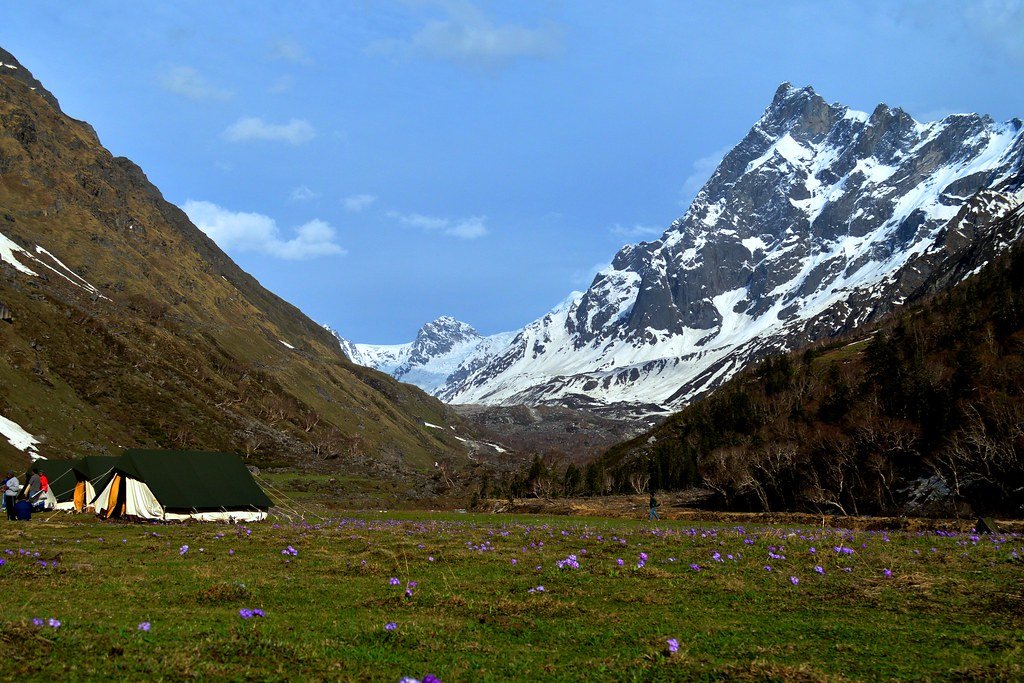Discover The Enchanting Valley Of Kullu | 26 Places To Visit In Kullu | How To Reach
Kullu, a captivating town in Himachal Pradesh, serves as the administrative headquarters of the Kullu district. Located on the banks of the Beas River, it is at the heart of the Kullu Valley, about 10 kilometers north of the Bhuntar Airport. The valley is known for its stunning views, with the Beas River flowing amidst hills covered in pine and deodar forests, along with vast apple orchards. The town has a rich history, mentioned in ancient Hindu scriptures like the Ramayana, Mahabharata, and the Puranas. Kullu has witnessed the rule of various empires, from the Nanda and Mauryan to the Mughal and Sikh empires. The name “Kullu” is believed to come from ‘Kulant Peeth’, meaning the ‘end of the habitable world’. Legend has it that Manu, the Hindu progenitor of humanity, settled here during a great flood, adding to the town’s historical and spiritual significance. Kullu is a peaceful destination, attracting visitors with its natural beauty, religious sites, and lively cultural festivals like the Kullu Dussehra.
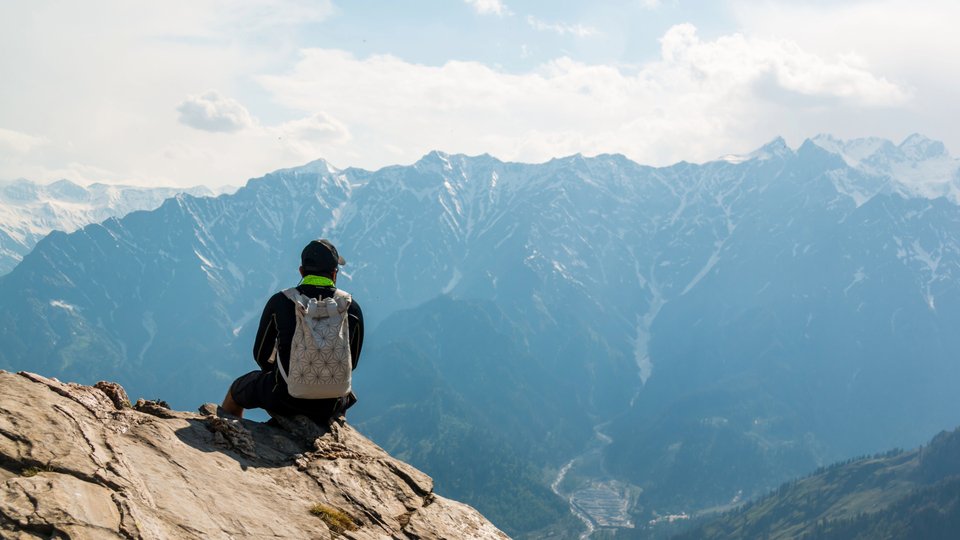
Best Places To Visit In Kullu:
he Great Himalayan National Park offers biodiversity and wildlife. The Raghunath Temple is a spiritual center with stunning architecture. Adventure activities like trekking and river rafting on the Beas River attract thrill-seekers. The local markets showcase traditional handicrafts. Kullu is a perfect blend of nature, adventure, and culture, ideal for a memorable getaway in Himachal Pradesh.
Here are some places to visit in Kullu:
1. Great Himalayan National Park
The Great Himalayan National Park, situated in Himachal Pradesh’s Kullu region, spans an impressive 1,171 km, showcasing the biodiversity of the Himalayan mountains. Established in 1984, this park varies in elevation from 1,500 to 6,000 meters, providing diverse climates and habitats for a wide range of wildlife. Recognized for its conservation efforts, the park was designated a UNESCO World Heritage Site in 2014 for its exceptional biodiversity conservation significance. It harbors over 375 fauna species, including 31 mammals, 181 birds, and various reptiles, amphibians, and insects, all protected under the Wildlife Protection Act of 1972. For adventure enthusiasts, the park offers several trekking routes of varying difficulty, allowing visitors to immerse themselves in the area’s natural beauty. The Great Himalayan National Park not only serves as a wildlife sanctuary but also stands as a testament to the rich natural heritage of the Himalayas.
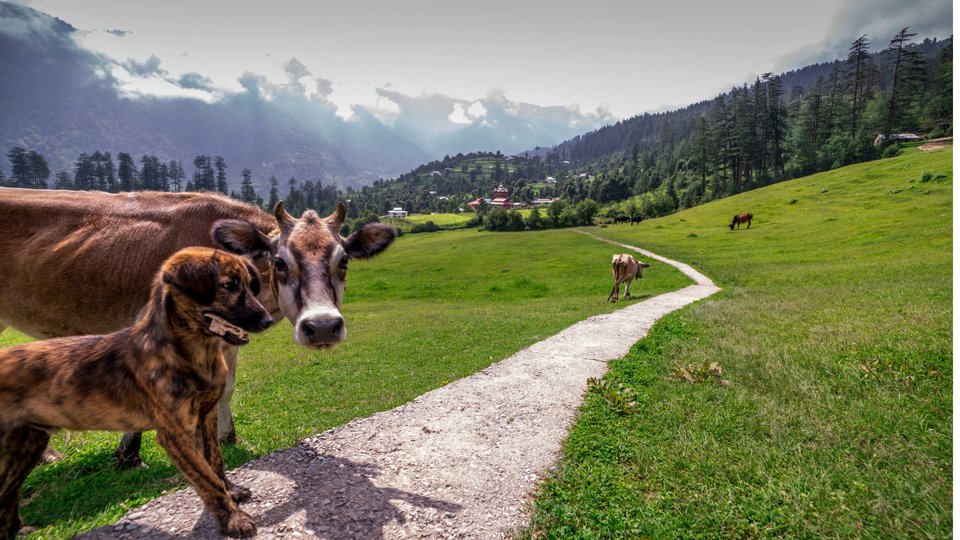
Timings: open from 10:00 am to 5:30 pm.
Entry fees:
- INR 50 per person for Indian nationals
- INR 200 per person for foreigners
- INR 30 per person for Indian students
- INR 100 per person for foreign students
2. Raghunath Temple
The Raghunath Temple, a significant historical and religious site in Kullu, Himachal Pradesh, was built by Raja Jagat Singh in 1660. Dedicated to Lord Rama, the temple houses an idol believed to be the same one used by Lord Rama himself. Renowned for its Pahari and Pyramidal architectural styles, the temple is steeped in local legends and spirituality, making it a must-visit for those interested in the region’s cultural heritage. The temple also plays a central role during the famous Dussehra festival, further highlighting its importance among the locals.
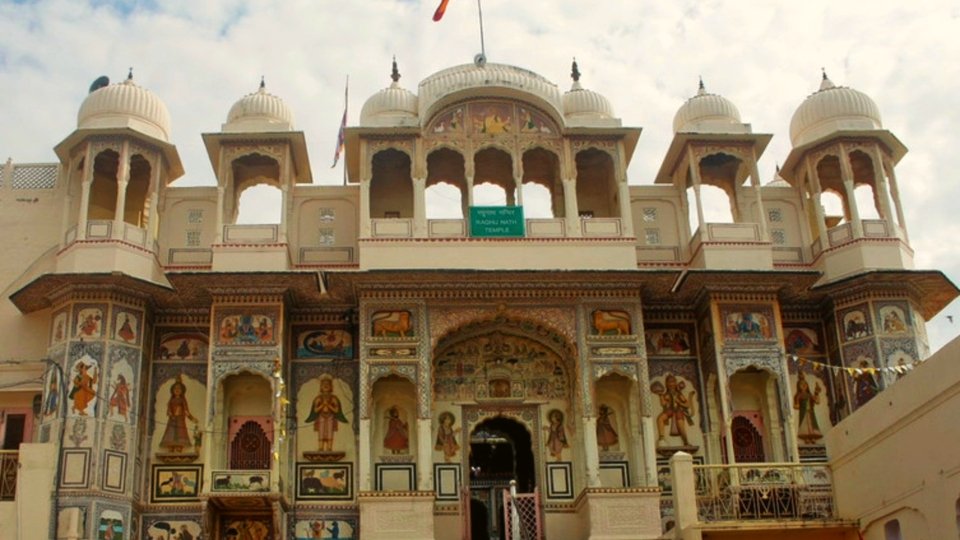
Timings: Open from 8:00 AM to 1:00 PM every day.
3. Bijli Mahadev Temple
The Bijli Mahadev Temple, located in Kullu, Himachal Pradesh, is a revered site dedicated to Lord Shiva. It is renowned for a unique phenomenon where the Shiva Linga inside the temple is said to shatter into pieces by lightning and then bound together by the temple priest using butter. This event, believed to occur annually, symbolizes the deity’s power, inspiring the temple’s name, which translates to ‘Lightning Mahadev Temple’. Situated at an altitude of about 2,460 meters, the temple offers a breathtaking panoramic view of the Kullu and Parvati valleys. Accessible via a rewarding 3 km trek from Kullu across the Beas river, it is a popular destination for both devotees and trekkers. The temple’s architecture and the surrounding landscape create a serene and spiritual atmosphere.
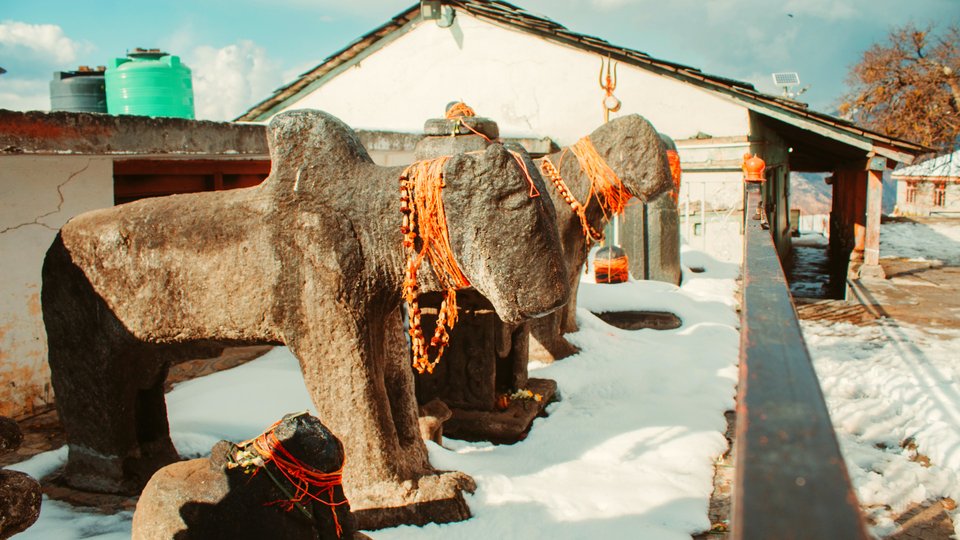
Timings: Open from 24 hours a day, all days of the week.
4. Solang Valley
Solang Valley, nestled in Himachal Pradesh’s Kullu district, is a renowned destination for adventure enthusiasts and nature lovers. Offering vibrant and dynamic sports conditions, the valley provides a range of activities such as skiing, paragliding, zorbing, and horse riding. During winter, the valley turns into a snowy paradise, perfect for skiing and snowboarding. In summer, as the snow melts, activities shift to zorbing, paragliding, and mountain biking, attracting thrill-seekers amidst the stunning Himalayan landscape. Located about 14 kilometers northwest of Manali, on the way to Rohtang Pass, Solang Valley is easily accessible for those seeking to experience its natural beauty and adventurous offerings. Whether you wish to glide down the slopes, soar through the skies, or simply enjoy the scenic views, Solang Valley is a must-visit destination in Himachal Pradesh.
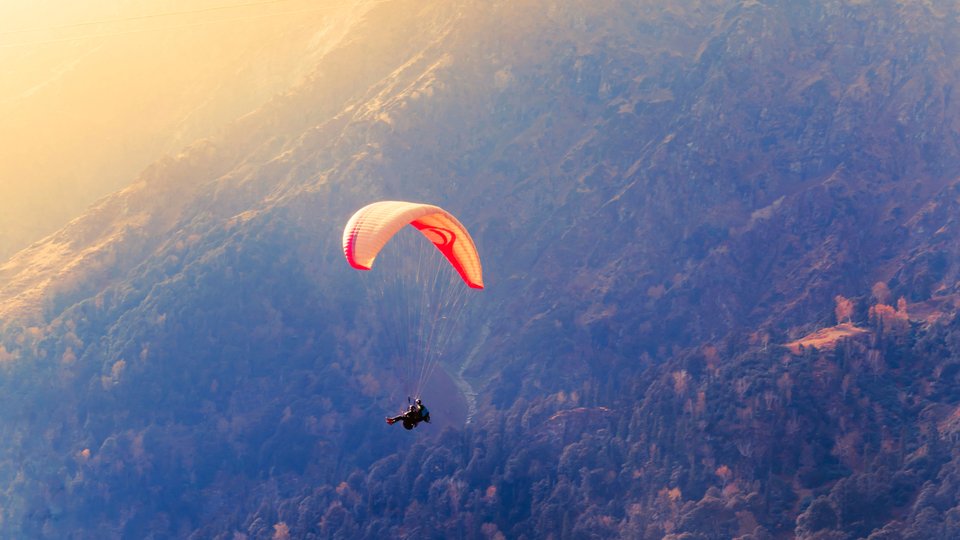
5. Manikaran
Manikaran, situated in the picturesque Parvati Valley of Kullu district, Himachal Pradesh, holds great religious significance for Hindus and Sikhs alike. Nestled at an altitude of 1760 meters, it is renowned for its hot springs and sacred sites. For Hindus, Manikaran is steeped in legend, with a belief that Lord Shiva and Goddess Parvati stayed here for eleven hundred years. During their stay, Parvati is said to have lost her precious stones in the stream, later retrieved by Shiva’s cosmic dance. Sikhs revere Manikaran for the Gurudwara Manikaran Sahib, linked to Guru Nanak, the founder of Sikhism. Legend has it that Guru Nanak performed a miracle here, causing chapatis to float and cook in the hot spring water, inspiring the langar tradition of serving food to all visitors.
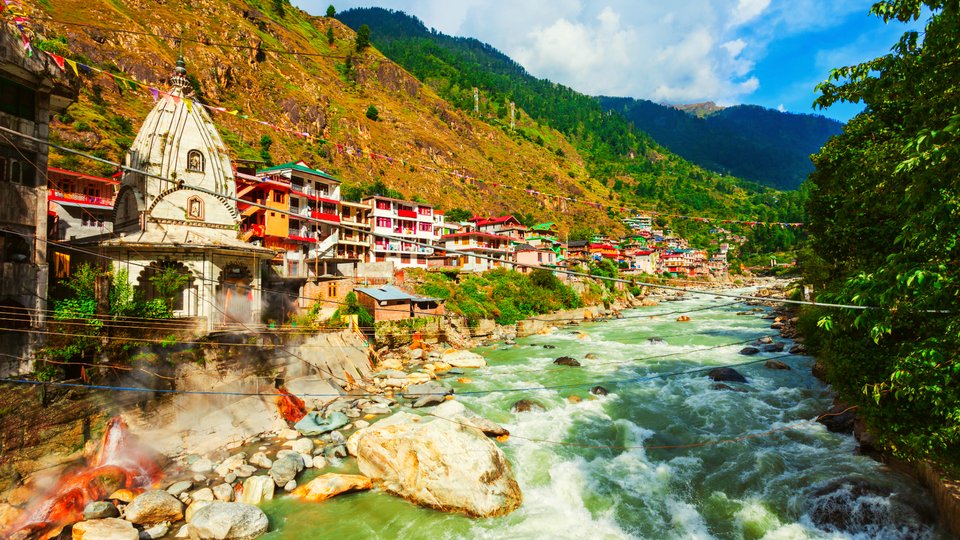
6. Kasol
Kasol, a charming village in the Parvati Valley of Kullu district, Himachal Pradesh, is often called the ‘Mini Israel of India’ due to its large Israeli tourist population. This serene village is nestled along the banks of the Parvati River, attracting backpackers and nature lovers alike. Kasol is renowned for its picturesque landscapes and serves as a base for treks to Malana and Kheerganga. It offers a unique mix of peaceful natural surroundings and a vibrant hippie culture. With its numerous cafes serving Israeli and local cuisines, bustling flea market, and tranquil ambiance, Kasol is a delightful destination that blends tranquility with adventure.
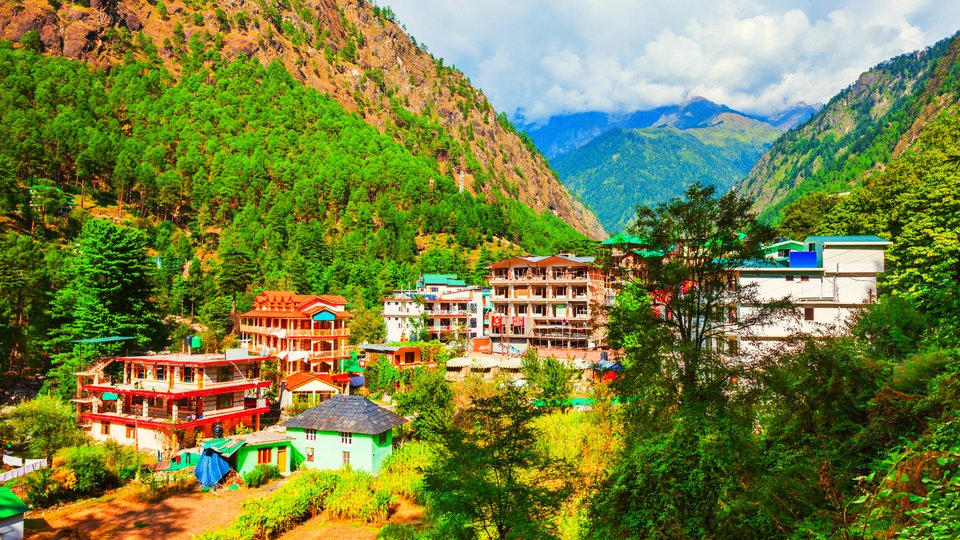
7. Malana
Malana, an ancient and secluded village in the Parvati Valley, lies northeast of the Kullu Valley in Himachal Pradesh. Renowned for its strong cultural and religious beliefs, Malana is famed for its distinctive social structure and lifestyle, often considered one of the oldest forms of democracy globally. The villagers claim descent from Alexander the Great’s soldiers. The village boasts two main temples, the Jamdagni Temple and the Renuka Devi Temple, integral to the locals’ spiritual life. Malana has garnered attention through documentaries highlighting its unique governance system and the Malana Hydro Power Station, linking it closer to the modern world.
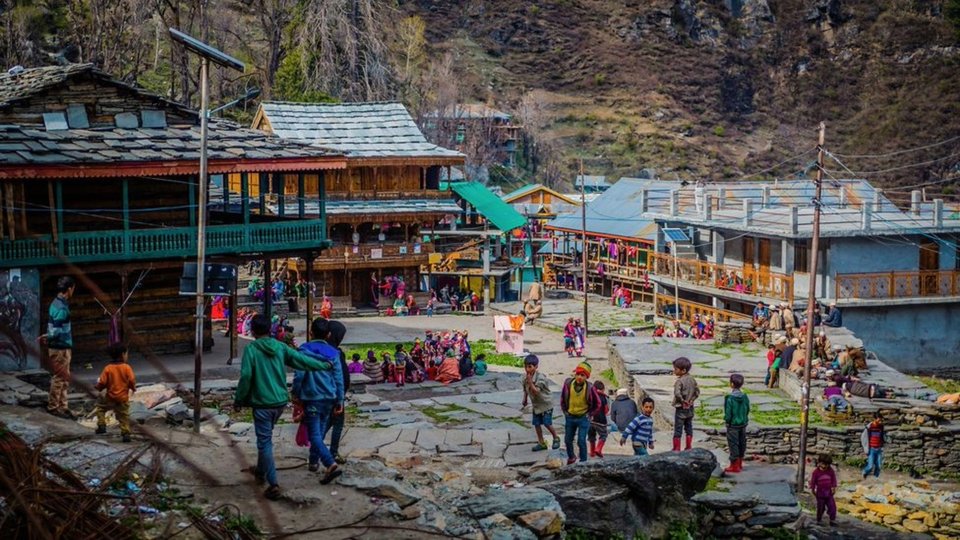
8. Tirthan Valley
Tirthan Valley, situated in Himachal Pradesh’s Kullu District, is a tranquil destination nestled at an altitude of 1600 meters. Named after the Tirthan River, it is renowned for its abundant adventurous activities and natural splendor. Serving as a gateway to the Great Himalayan National Park, the valley is a paradise for trekkers, birdwatchers, and wildlife enthusiasts. With its pleasant weather and picturesque landscapes, Tirthan Valley provides a peaceful retreat away from crowded tourist spots.
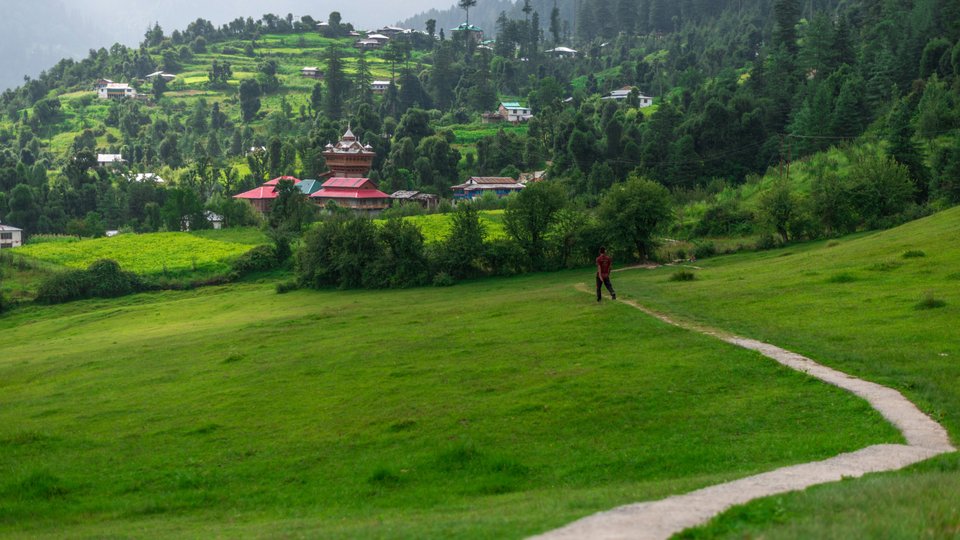
9. Bhuntar
Bhuntar, a picturesque town in Himachal Pradesh’s Kullu district, serves as a central hub for tourists heading to Kullu, Manali, Kasol, and Manikaran, with the Kullu Airport located nearby. Positioned along the banks of the Beas River, the town is renowned for its scenic beauty and temples of significant architectural and religious importance, including the Basheshwar Temple and Bijli Mahadev Temple. Bhuntar offers a peaceful retreat, making it an ideal destination for those seeking to explore the tranquil and less crowded parts of Himachal Pradesh.
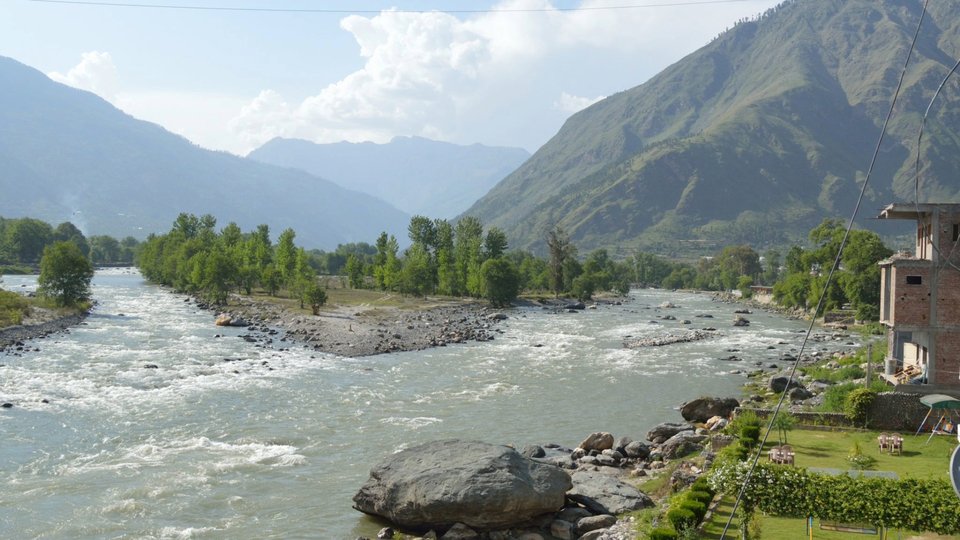
10. Kheer Ganga
Kheer Ganga, situated in Himachal Pradesh’s Kullu district, is a tranquil village celebrated for its hot water springs and breathtaking views of the Himalayas. It is a favored spot for trekkers, providing an exhilarating experience amidst pristine nature. The trek to Kheer Ganga is rated as moderate in difficulty and is most enjoyable between May and November. The region is renowned for its natural splendor, spiritual significance, and the invigorating hot springs, a major attraction for visitors.
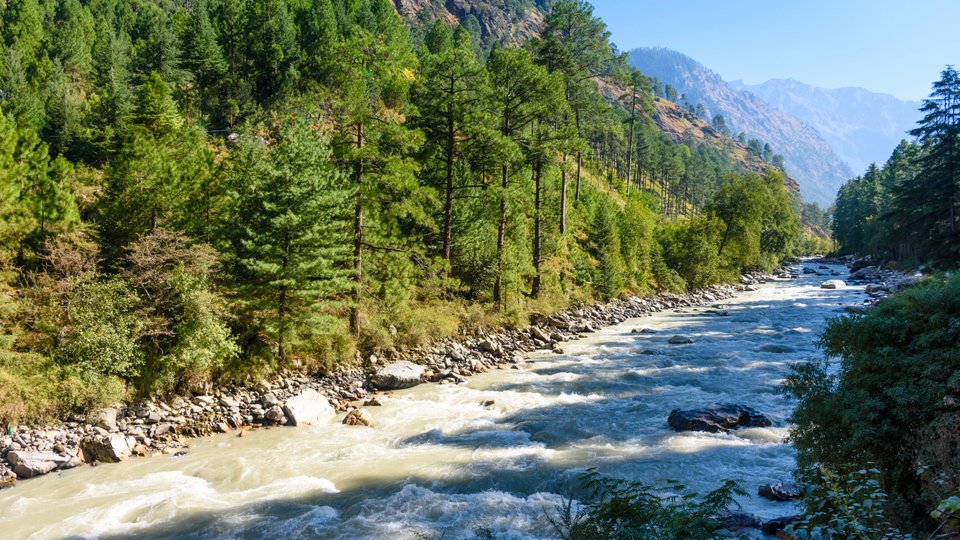
11. Jalori Pass
Jalori Pass, situated in Himachal Pradesh’s Kullu district, is a high mountain pass standing at an elevation of 10,800 feet (3,120 meters) above sea level. It is the nearest mountain pass from Delhi, located approximately 600 kilometers away, and is renowned for its scenic beauty and challenging terrain. Accessible via a narrow and steep road, the pass requires skilled driving to navigate. It is a popular destination for trekking, offering routes to attractions like Serolsar Lake, and provides stunning views of the Himalayas. The pass is typically closed in December due to heavy snowfall and reopens in March, being one of the first high-altitude passes to become accessible each year.
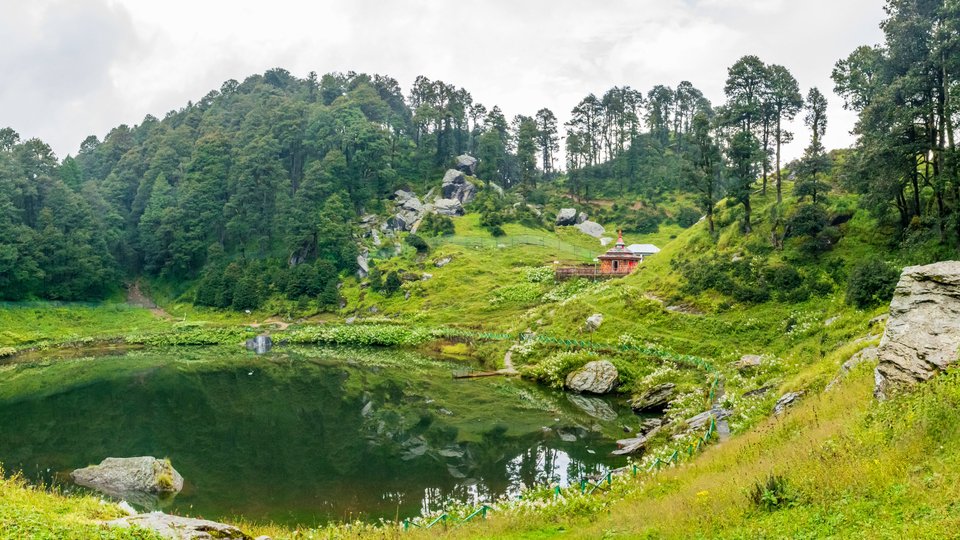
12. Hampta Pass
Hampta Pass is a stunning high-altitude mountain pass situated in Himachal Pradesh’s Kullu region. It is renowned for its dramatic crossover trek, offering trekkers contrasting landscapes: the lush green Kullu Valley on one side and the stark, arid Lahaul landscape on the other. Standing at an elevation of approximately 14,065 feet, Hampta Pass provides breathtaking views and a thrilling experience for adventure enthusiasts. The trek is rated as moderate in difficulty and is distinguished by its rich flora on the Kullu side, while the Lahaul side features barren lands and a deserted atmosphere.
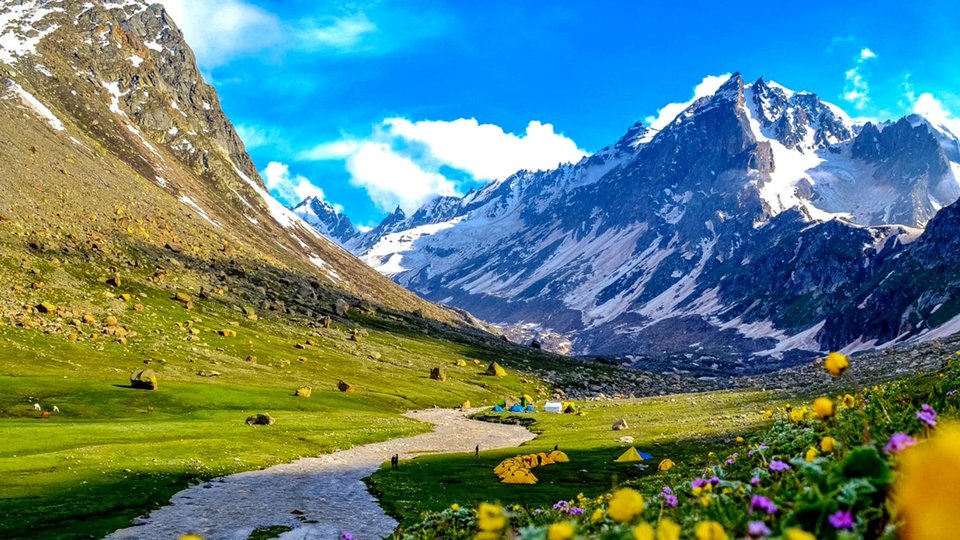
13. Hanogi Mata Temple
The Hanogi Mata Temple, situated in the picturesque Kullu Valley of Himachal Pradesh, is a revered site dedicated to Goddess Hanogi Mata. A source of solace and spirituality for devotees, this temple is perched on a cliffside, offering panoramic views of the lush valley and the meandering Beas River below. Its tranquil ambiance, accompanied by the soothing sounds of the river and the melodious chirping of birds, provides a serene retreat for pilgrims and tourists seeking moments of peace and reflection. The temple’s architecture, though simple, is elegant, reflecting the humble devotion of the local culture. It serves as a place for meditation and offers vibrant festivities during special occasions, enriching the spiritual experience of visitors.
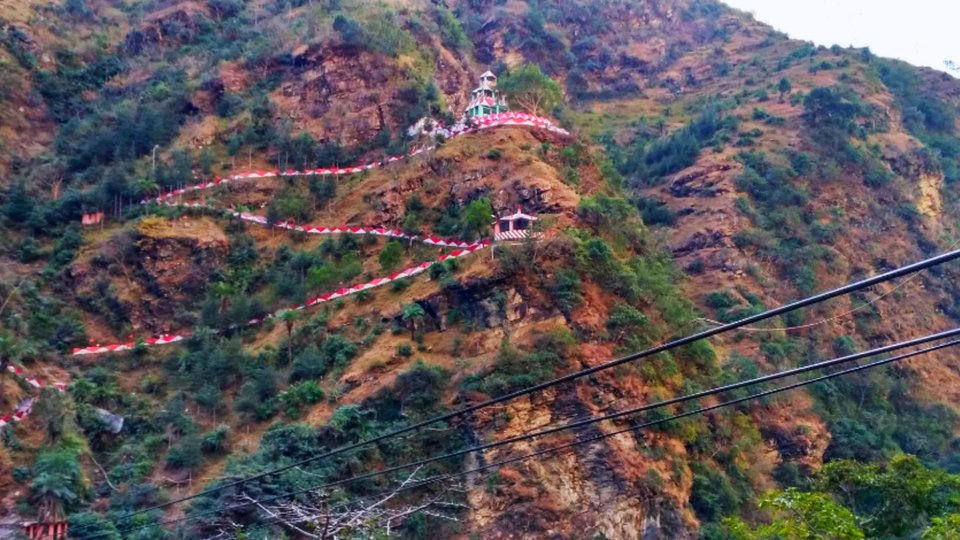
Timings: Open from 6:00 AM to 8:00 PM every day.
14. Vaishno Devi Temple
The Vaishno Devi Temple in Kullu, also known as Mahadevi Tirth, is a spiritual haven situated along the banks of the Beas River. Established in 1966 by Swami Sewak Das Ji Maharaj, the temple complex offers a blend of peace and devotion amidst the natural beauty of sprawling forests, apple orchards, and majestic hills. It encompasses a cave housing an idol of goddess Vaishno Devi and features several small temples dedicated to various Hindu deities. The temple also offers ‘Langar’ and ‘Saraye’ services, providing free vegetarian meals and accommodation to worshippers. A destination for both pilgrims and tourists, the temple attracts those seeking blessings and a moment of tranquility on their journey through Himachal Pradesh.
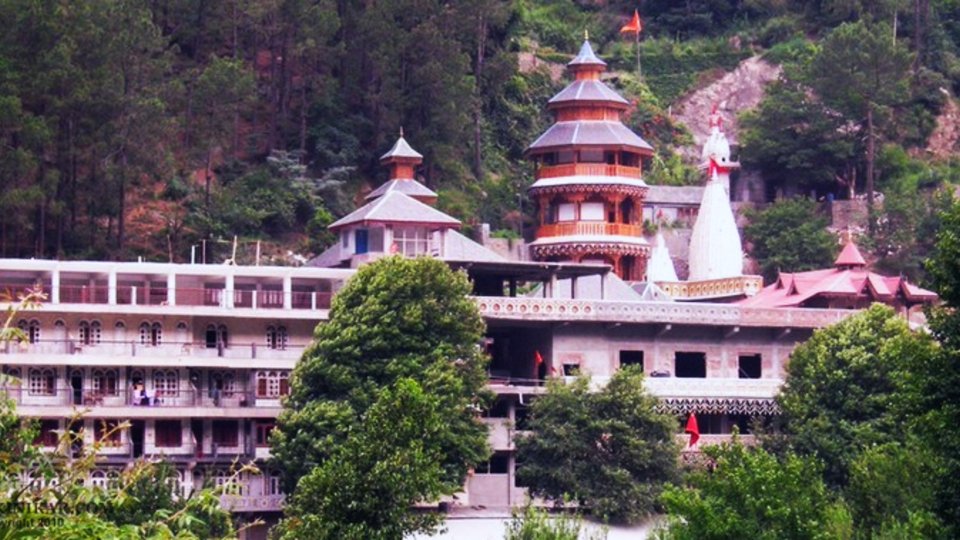
Timings: open from 8:00 AM to 8:00 PM every day.
15. Chandrakhani Pass
Chandrakhani Pass is a picturesque mountain pass located at an altitude of 3,660 meters in Himachal Pradesh’s Kullu Valley. Renowned for its breathtaking views of the Deo Tibba Peak, Pir Panjal, and Parbati range of mountains, the pass offers a trekking experience that combines adventure with cultural exploration, showcasing the hilly cultures of Himachal Pradesh. The best time to visit is from mid-June to early October, and the journey through Malana is a major highlight, featuring small settlements and lush greenery. The pass is a favorite among nature lovers and adventure enthusiasts seeking the stunning beauty of the Himalayas as a backdrop.
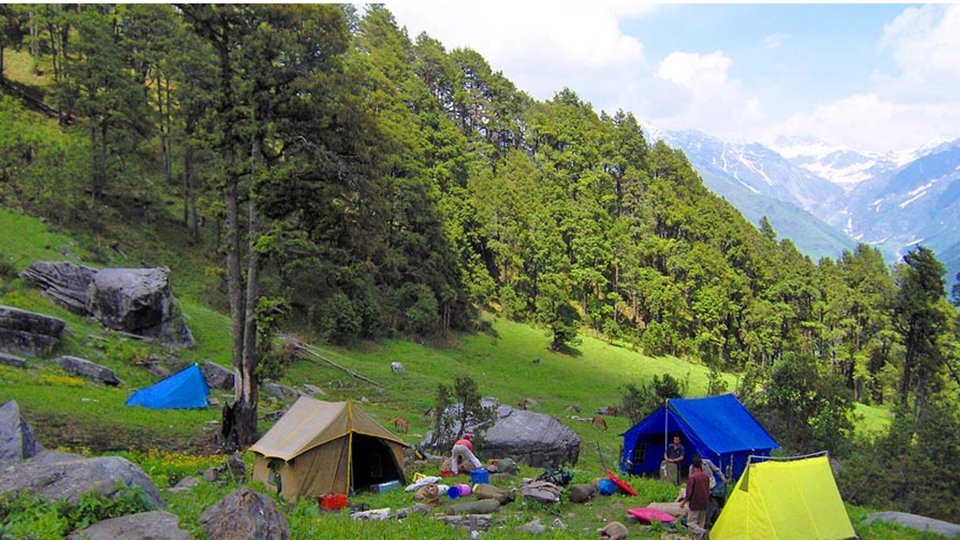
16. Dechen Choekhor Mahavihara Monastery
The Dechen Choekhor Mahavihara Monastery is a serene Buddhist sanctuary located in Himachal Pradesh’s Kullu Valley. It stands as a testament to the rich traditions of the Drukpa Kargyu lineage of Tibetan Buddhism. The monastery offers a peaceful retreat for meditation and spiritual learning, where the air is filled with the scent of incense and the sound of prayer wheels. Its architecture is a harmonious blend of vibrant colors and intricate designs, housing impressive Buddha statues that inspire awe and reverence. Visitors can immerse themselves in Buddhism teachings, join meditation sessions, and experience the serene lifestyle of the resident monks. The monastery serves as a beacon of peace and spiritual wisdom, drawing seekers from around the world.
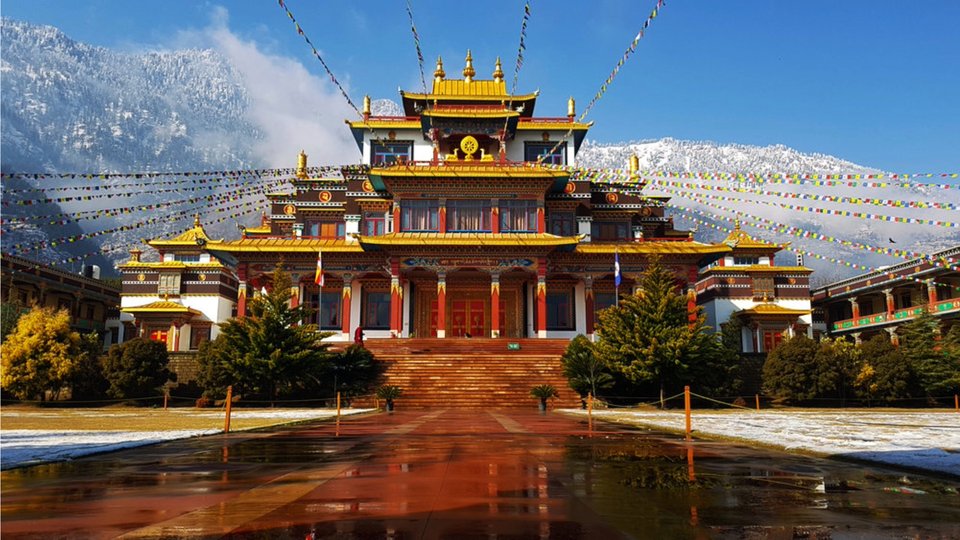
17. Dhakpo Shedrupling Monastery
Dhakpo Shedrupling Monastery, also known as Kais Monastery, is a serene Buddhist monastery situated in Kullu’s Kais Village along the Beas River. Established in 2005 and inaugurated by His Holiness the Dalai Lama, the monastery is nestled against the backdrop of majestic mountains and is renowned for its dedication to the Buddha Dharma. Serving as a spiritual hub for Tibetan monks, it provides teachings in Buddhist philosophy. Visitors have the opportunity to attend teaching classes by His Holiness Dhakpo Rinpoche in August and join prayers in the hall before the statue of Buddha.
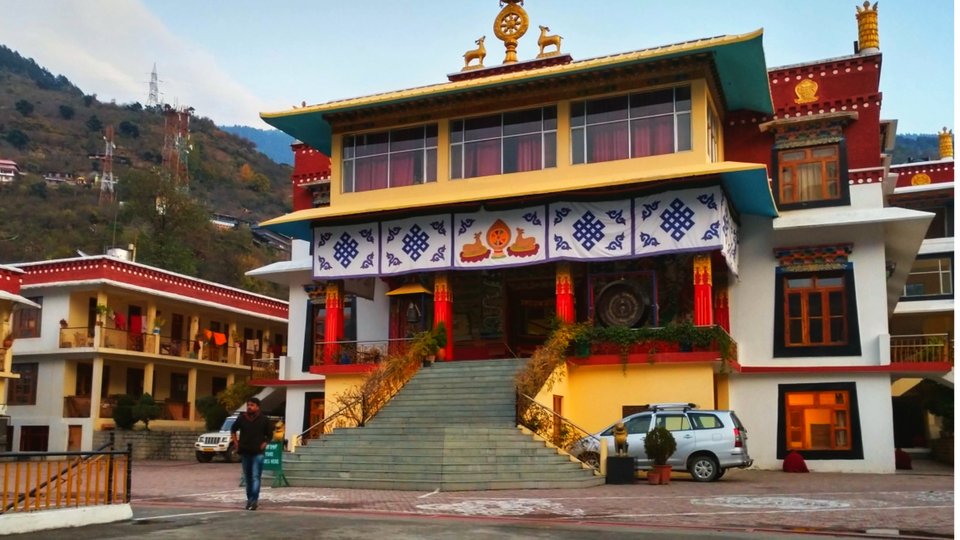
18. Pandoh Dam
The Pandoh Dam, located in the Mandi district of Himachal Pradesh, is an embankment dam built on the Beas River. Completed in 1977, its main purpose is hydroelectric power generation. The dam redirects the Beas River waters to the southwest through a network of tunnels and channels, where it is utilized for power generation at the Dehar Power House before being discharged into the Sutlej River. This river interconnection helps augment the flow into Gobind Sagar, thereby boosting power generation at the Bhakra Dam and providing additional irrigation water. The dam also forms Pandoh Lake, with a total capacity of 41,000,000 cubic meters and a surface area of 1.7 square kilometers.
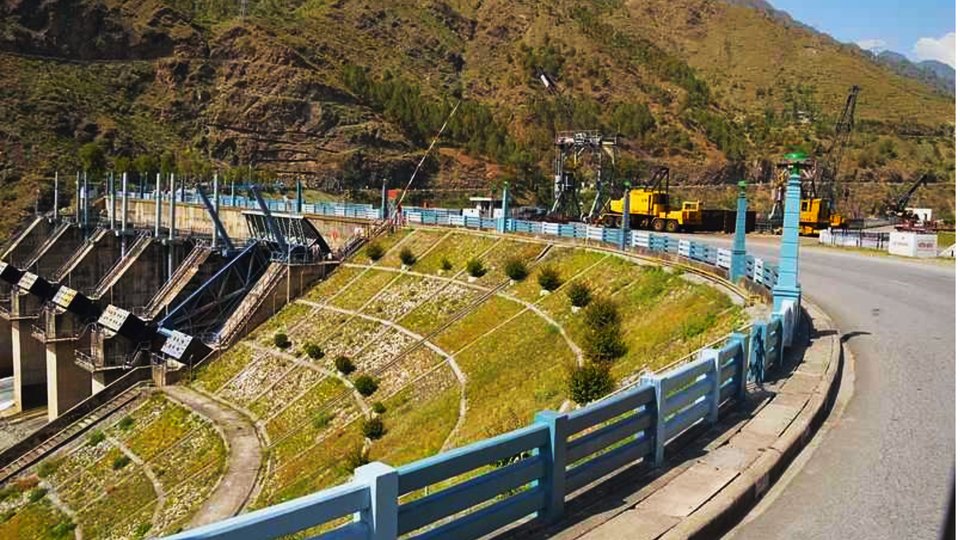
19. Friendship Peak
Friendship Peak, a prominent summit in Himachal Pradesh’s Pir Panjal range, stands at an elevation of 5,289 meters. It is a favored trekking destination renowned for its moderate difficulty and the breathtaking panoramic views from its peak. The best time to undertake this trek is from May to June and September to October. Trekkers can relish the diverse landscapes of alpine meadows, dense forests, and snow-covered trails as they ascend towards the summit.
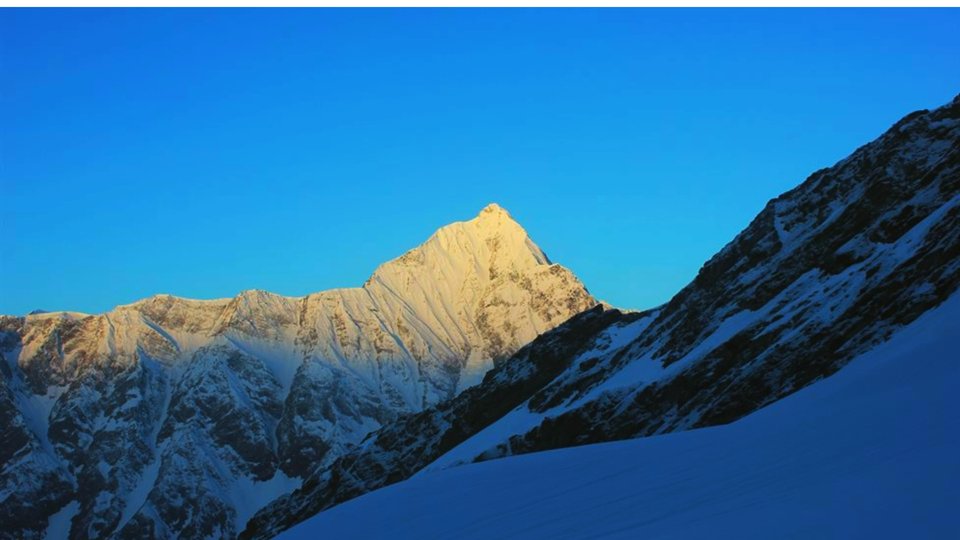
20. Bhrigu Lake
Bhrigu Lake, also known as Brighu Lake, is a high-altitude lake situated at approximately 4,300 meters (14,100 ft) in Himachal Pradesh’s Kullu district, India. Located east of Rohtang Pass and about 6 kilometers from Gulaba village, it can be reached by trekking from the Vashishth temple near Manali. The lake is named after Maharishi Bhrigu, who is said to have meditated near it, making it a sacred site. According to local belief, the lake never freezes completely due to this association. The trek to Bhrigu Lake is a popular route, offering stunning views of the surrounding snow-capped peaks and lush meadows.
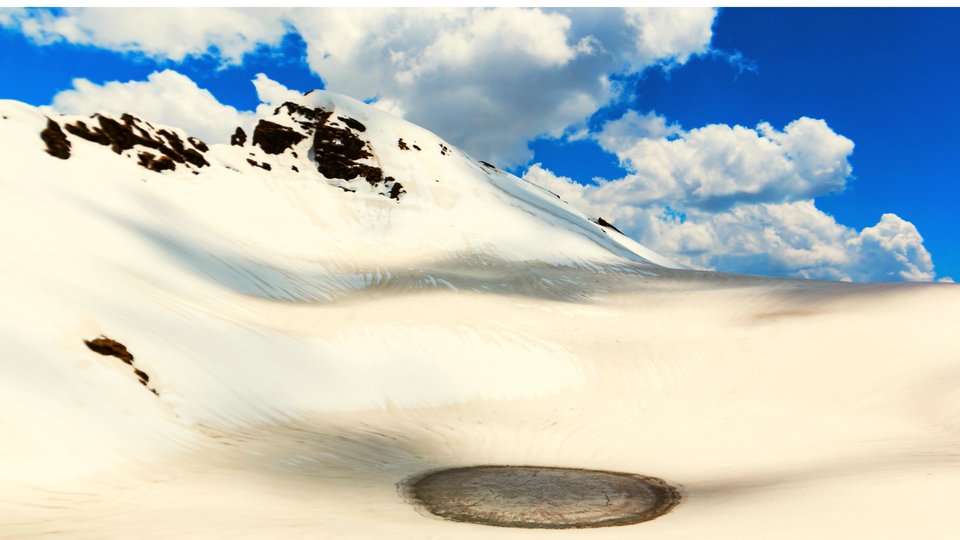
21. Gauri Shankar Temple
The Gauri Shankar Temple, a Hindu temple located in Himachal Pradesh’s Kullu district, is steeped in centuries of history. Dedicated to Lord Shiva and Goddess Parvati, it is renowned for its striking architecture and intricate carvings. The temple’s Shikhara-style architecture resembles mountain peaks, with a dome-shaped top and square-shaped bottom, featuring a nine-storey Shikhara. Inside, idols of Shankar and Gauri, along with their sons Ganesh and Kartik, are placed under a silver canopy. The temple is also famous for its detailed carvings of Lord Ganesha, dancing figures, and musicians in the garbhagriha, as well as the gold jewelry adorning the silver canopy.
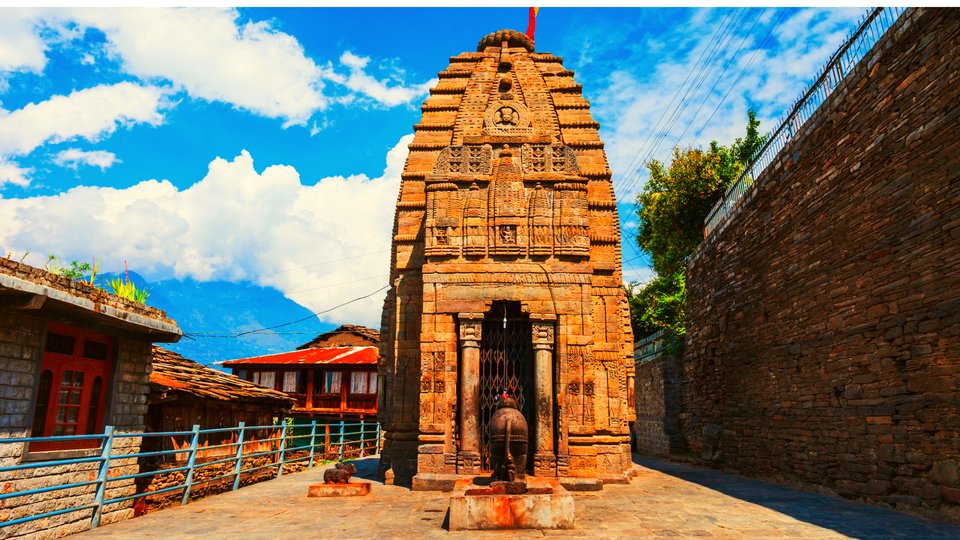
Timings: Open from 8:00 AM to 7:00 PM.
22. Beas Kund
Beas Kund is a tranquil alpine lake located at an altitude of 3,810 meters in the Solang Valley of Kullu, Himachal Pradesh. It marks the source of the Beas River and is surrounded by a unique igloo-like rock formation. The lake holds significance for Hindus and is a favored trekking spot, providing breathtaking views of the Pir Panjal range. The trek to Beas Kund is relatively easy and suitable for beginners, as it does not require prior high-altitude experience.
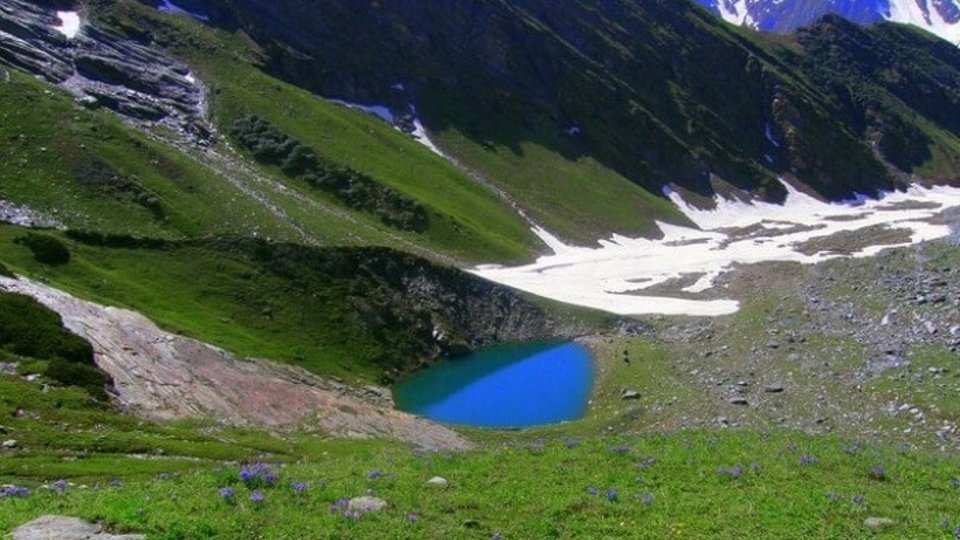
23. Jana Waterfall
Jana Waterfall, situated near Manali in Himachal Pradesh’s Kullu District, is renowned for its stunning beauty. Surrounded by deodar trees, apple orchards, and snow-capped mountains, it is considered one of the region’s hidden gems. The waterfall offers a serene environment and the opportunity to savor local Himachali cuisine at nearby dhabas. The best time to visit is in September, when the water flow is at its peak. It’s a bit secluded, making it an ideal peaceful retreat for those seeking to avoid the more crowded tourist spots.
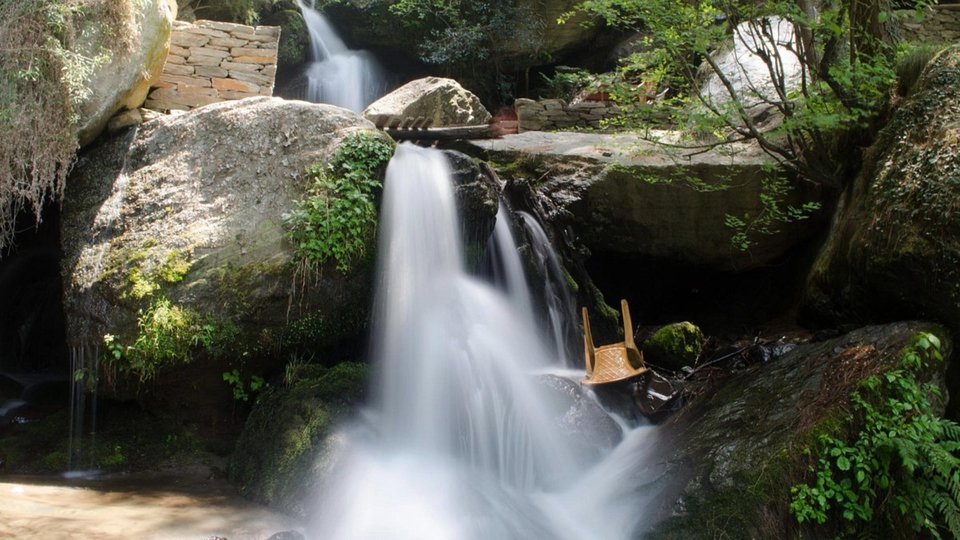
24. Kulant Pith
Kulant Pith in Manikaran, Kullu, is revered as one of India’s most sacred and esteemed pilgrimage sites. Legend has it that Lord Shankar was greatly pleased by this place and graced it with his presence, attesting to its purity. The Vishnu Kund at Kulant Pith is considered the most pristine among all sacred pools, and bathing in its waters is believed to absolve one of all sins. Local beliefs suggest that consuming food cooked in the waters of this kund can guide one to Vishnu Lok, while the kund’s waters have the power to alleviate individuals of their anger and negativity.
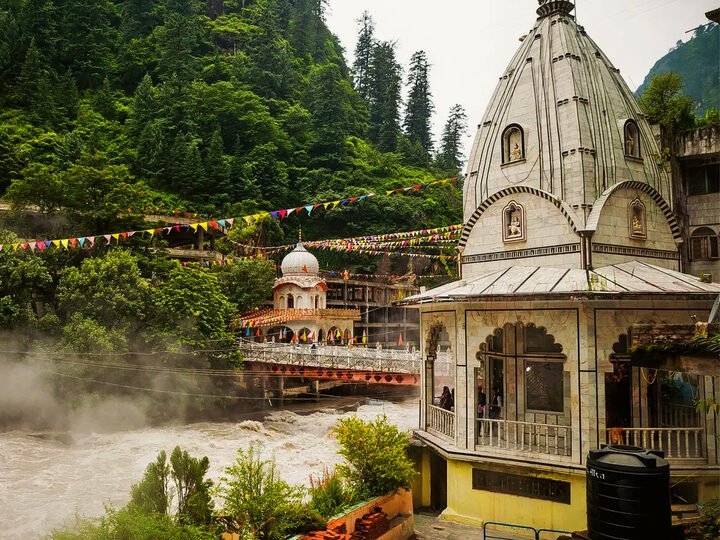
25. Bara Bhangal
Bara Bhangal, a secluded village in Himachal Pradesh’s Kullu district, is renowned for its challenging and thrilling trekking routes. Perched at an altitude of 4875 meters, it is nestled amidst alpine landscapes between the Kullu Valley and Dharamshala, offering stunning vistas of the Western Himalayas. The trek to Bara Banghal is among the most arduous in the area, involving traversing high-altitude passes like Kalihani Pass at 4725 meters and Thamsar Pass at 4875 meters. The village remains isolated from the outside world for much of the year and can only be reached by a trek that typically takes at least two days from the nearest roadhead.
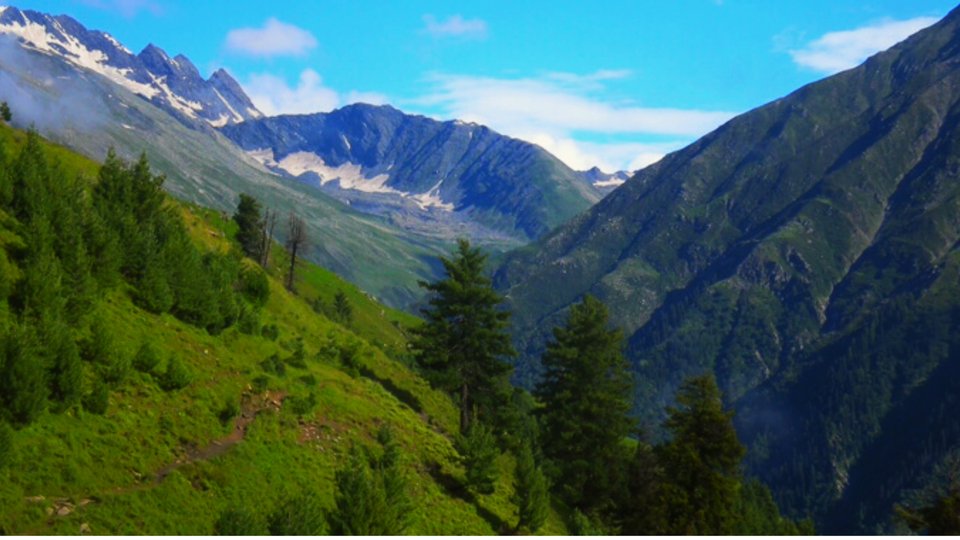
26. Naggar Castle
Naggar Castle, a historic landmark in Kullu, Himachal Pradesh, India, was built around 1460 A.D. by Raja Sidh Singh of Kullu. The castle, now a heritage hotel managed by the Himachal Pradesh Tourism Development Corporation (HPTDC) since 1978, showcases a unique fusion of European and Himalayan architectural styles. Situated amidst the Beas Valley forests, it offers breathtaking views. Once the official residence of the Kullu kings, the castle is now a popular tourist destination, providing a glimpse into local Himalayan architecture and culture. It has also served as a filming location for numerous Bollywood movies.
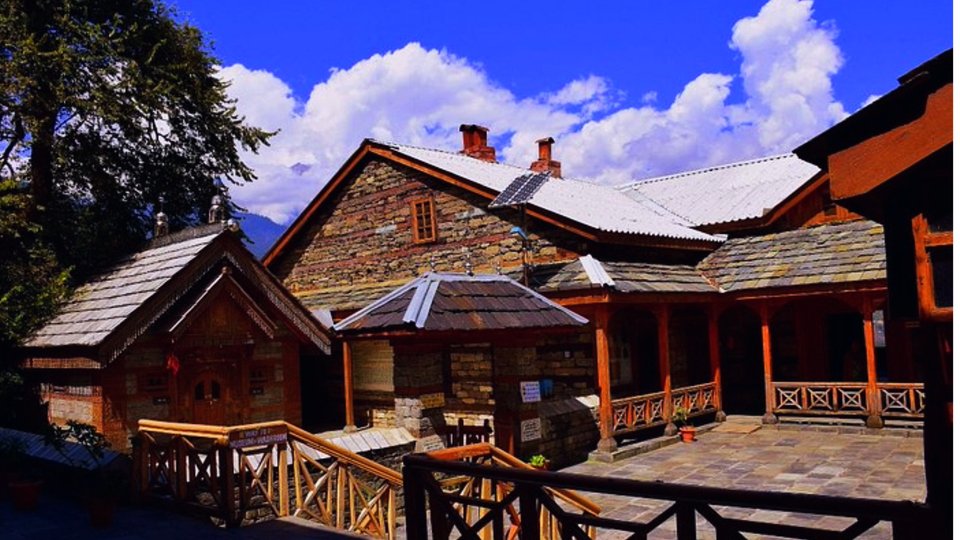
These were some places to visit in Kullu. Hope you liked it. Have a safe journey!
How To Reach Kullu:
By Air:
The nearest airport to Kullu is Bhuntar Airport, located approximately 10 kilometers from the town. It has regular flights from Delhi and Chandigarh. From the airport, you can hire a taxi or take a bus to reach Kullu.
By Road:
Kullu is well-connected by road to major cities like Delhi, Chandigarh, and Shimla. You can drive to Kullu or take a bus from these cities. The HRTC (Himachal Road Transport Corporation) operates regular buses to Kullu from nearby cities.
Book A Cab: you can book a cab from our website along with a customized itinerary or can hire just a cab for your next trip. So just do hurry. Call Us On:- +911223577273
By Train:
The nearest railway station to Kullu is Joginder Nagar Railway Station, located about 125 kilometers away. However, this station is not well-connected, and it’s better to reach Kullu by road from major railway stations like Chandigarh and Pathankot.
Here’s a table of trains running from Delhi to Joginder Nagar Railway Station, including their names, numbers, timings, and charges:
| Train Number | Train Name | Departure from Delhi | Arrival at Joginder Nagar | Travel Time | Charges |
|---|---|---|---|---|---|
| 12919 | MALWA EXPRESS | 04:30 | 12:25 | 07:55H | Various |
| 12477 | JAM SVDK EXP | 05:40 | 12:50 | 07:10H | Various |
| 12475 | HAPA SVDK EXP | 05:40 | 12:50 | 07:10H | Various |
| 12473 | SARVODAYA EXP | 05:40 | 12:50 | 07:10H | Various |
| 12471 | SWARAJ EXPRESS | 05:40 | 12:50 | 07:10H | Various |
| … | … | … | … | … | … |
Kullu Weather & Temperature
Kullu experiences a pleasant climate for most of the year, with the summer months (April to June) being mild and enjoyable. The temperature during these months ranges from 15°C to 30°C, making it ideal for sightseeing and outdoor activities. The monsoon season (July to September) brings moderate to heavy rainfall, enhancing the natural beauty of the region but also increasing the risk of landslides. The winter months (October to February) are cold, with temperatures ranging from 0°C to 20°C. This is the best time for snow lovers to visit Kullu, as it receives snowfall, especially in December and January.
Nearby Places To Visit In Kullu
| Tourist Attraction | Distance from Kullu |
|---|---|
| Manali | Approx. 40 km |
| Shimla | Approx. 200 km |
| Rishikesh | Approx. 500 km |
| Dharamshala | Approx. 200 km |
| Srinagar | Approx. 400 km |
| Mcleodganj | Approx. 205 km |
Frequently Asked Questions:
What is Kullu famous for?
Kullu is renowned for its picturesque landscapes, featuring the majestic hills of the Himalayas, lush deodar forests, and sprawling apple orchards. It’s also celebrated for adventure sports like paragliding, river rafting, and trekking.
Is Kullu worth visiting?
Absolutely, Kullu is a must-visit for nature lovers and adventure enthusiasts, offering a blend of breathtaking natural beauty and thrilling outdoor activities. It’s a perfect retreat for those seeking peace or an adrenaline rush in the heart of the Himalayas.
Is there snowfall in Kullu?
Yes, Kullu experiences snowfall, particularly in the higher reaches, with recent reports indicating moderate to heavy snowfall in parts of the district. The winter months, especially December and January, are known for snowfall in the Kullu region.
Which river flows in Kullu?
The Beas River flows through the Kullu Valley, providing a picturesque setting with its clear waters and vibrant ecosystem. It’s a central feature of the region, supporting agriculture and tourism activities.



